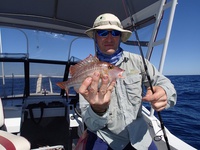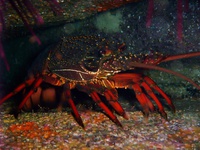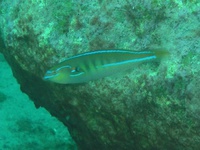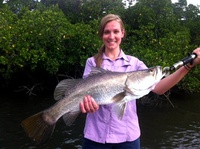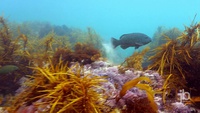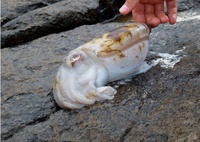Top 3 sightings per state and other Redmap data
The Redmap Team, 20 May 2015.
Australian fishers, divers and beachcombers have shared on Redmap more than 1270 sightings of marine life they considered uncommon to their local seas. More than a quarter of the confirmed sightings were out of their usual home range; and many more were valuable observations of elusive or poorly-documented species. And, divers appeared to be the most enthusiastic reporters to Redmap! Here is a snapshot of Redmap's citizen science data, including the Top 3 sightings in each state...
-
WESTERN AUSTRALIA'S most reported species was the redthroat emperor (Lethrinus miniatus). Redmap WA members are spotting this species below Perth, which is out of its usual range (Photo: MarkR)
-
TASMANIA'S top logged species was the eastern rock lobster (Sagmariasus verreauxi). This one was caught by Danny Lee in northern Tasmania.
-
NEW SOUTH WALES' most reported species was the Brokenline wrasse (Stethojulis interrupta). This tropical fish is more at home in QLD waters. Redmap aims to better map its distribution, particularly below Port Stephens (Photo: Tom Davis).
-
QUEENSLAND'S most reported Redmap species was Barramundi (Lates calcarifer). We ask Queenslanders to log this fish south of Bundaberg (Photo: Martha Brians).
-
VICTORIA'S most reported species was the western blue groper (Achoerodus gouldii). It's a common species along Australia's southern coasts - but Redmap would like to see if it is moving south; and further into Victoria's eastern waters (Photo: Jarrod Boord).
-
SOUTH AUSTRALIA's 'most sighted' species was the giant cuttlefish (Sepia apama), which is a Redmap species of interest. Giant cuttlefish occur across southern Australia but aggregate to breed near Point Lowly, in the Spencer Gulf, SA. This is the only known breeding aggregation in the world for this species. Numbers have declined in recent years and scientists are not sure why. We need more sightings to assess its distribution (Photo: Andy Burnell).
Top 3 Redmap Sightings
The most-reported Redmap species, both in and out of their usual home range, for each state were:*
Western Australia (click on links to view the species):
1. Redthroat emperor (Lethrinus miniatus)
2. Blue marlin (Makaira nigricans)
3. Spangled emperor (Lethrinus nebulosus)
Tasmania:
1. Eastern rock lobster (Sagmariasus verreauxi)
2. Yellowtail kingfish (Seriola lalandi)
3. Zebrafish (Girella zebra)
New South Wales:
1. Brokenline wrasse (Stethojulis interrupta)
2. Moorish idol (Zanclus cornutus)
3. Threadfin butterflyfish (Chaetodon auriga)
Queensland:
1. Barramundi (Lates calcarifer)
(more community data is needed from QLD fishers and divers!)
Victoria:
1. Western blue groper (Achoerodus gouldii)
2. White ear (Parma microlepis)
3. Whitebarred boxfish (Anoplocapros lenticularis)
South Australia:
1. Giant cuttlefish (Sepia apama)
2. Leatherback turtle (Dermochelys coriacea)
(more community data is needed from SA divers and fishers!)
* to 31 March 2015
Who reported these sightings?
Some 56 per cent of Redmap sightings were logged by divers, followed by fishers (33%), beachcombers (7%) and the rest by boaters and swimmers, as shown in the chart below:
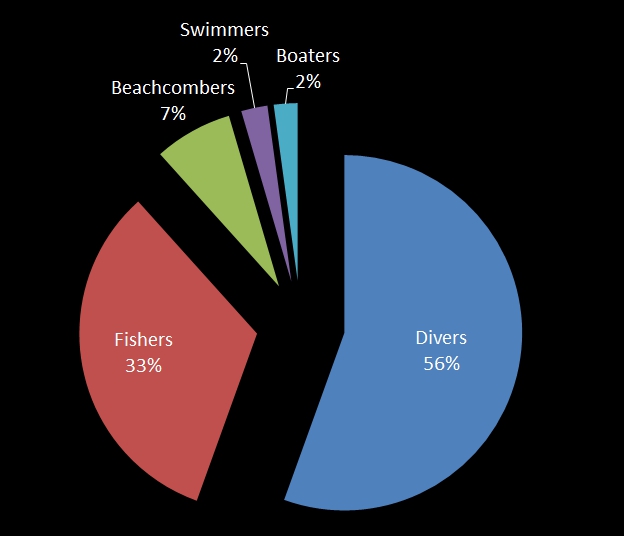
Which state reported the most sightings?
Tasmanians logged the most sightings! This makes sense for two reasons. First, sightings have been collected in Tasmania over a longer period of time: the project began in the southern state in 2009 and only went national in 2012. Second, Tasmania's east coast is an ocean warming "hotspot", with seas warming at three to four times the global average. Tasmania is experiencing more obvious changes in the distribution of marine life as more species extend their ranges south in search of their preferred climate.
Redmap members in New South Wales and Western Australia followed in the sightings numbers, as shown below:

What does the data mean?
Over time, the community's marine observations will help scientists track which species are shifting into new regions in response to changes in the marine environment such as ocean warming. This information is important to prepare recreational and commercial fishers for potential changes in the number and types of fish they will catch in the near-future.
Redmap scientists can't monitor Australia's vast coastline without your help - so keep logging sightings of uncommon marine life on the REDMAP app and website!


